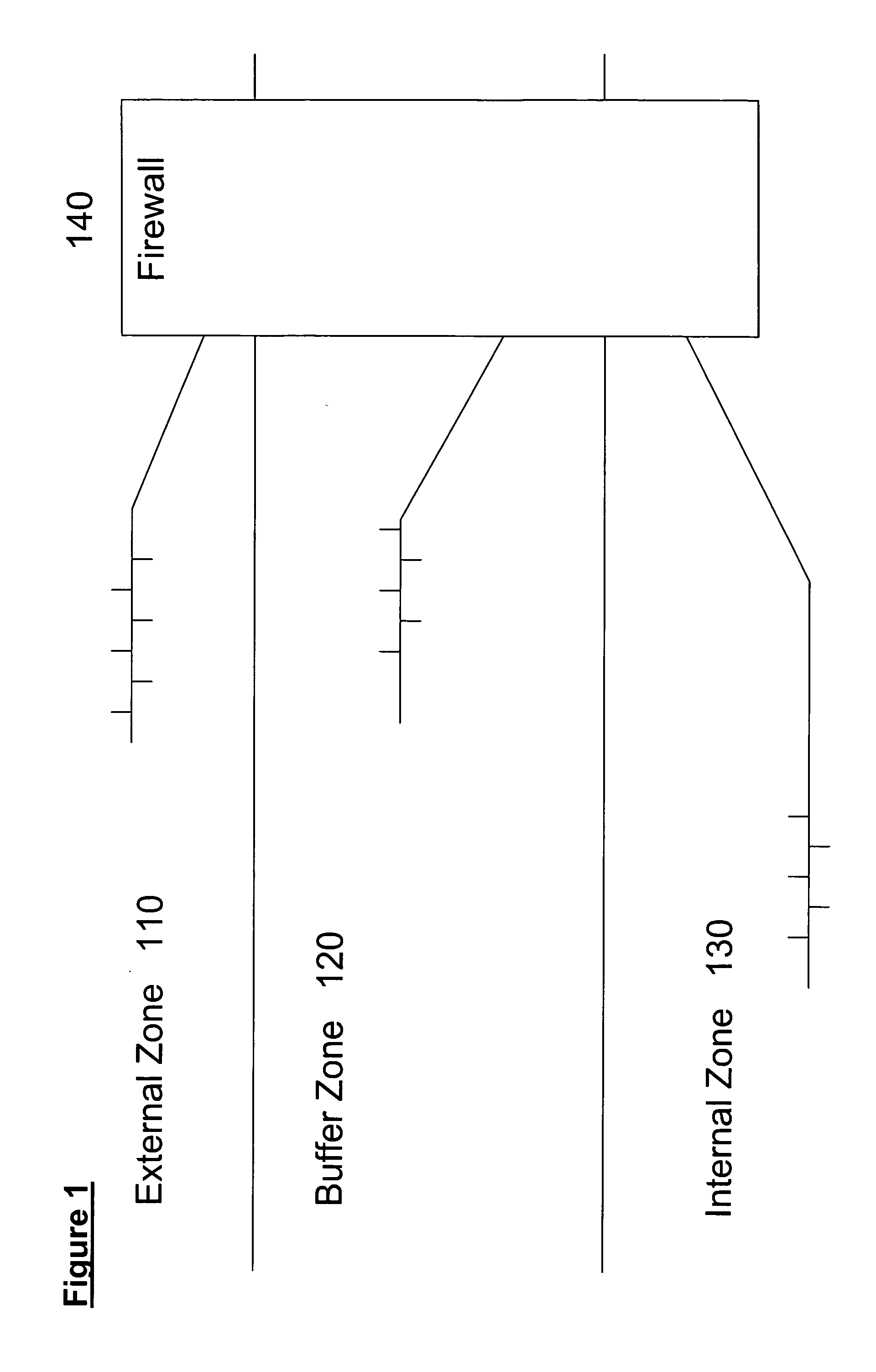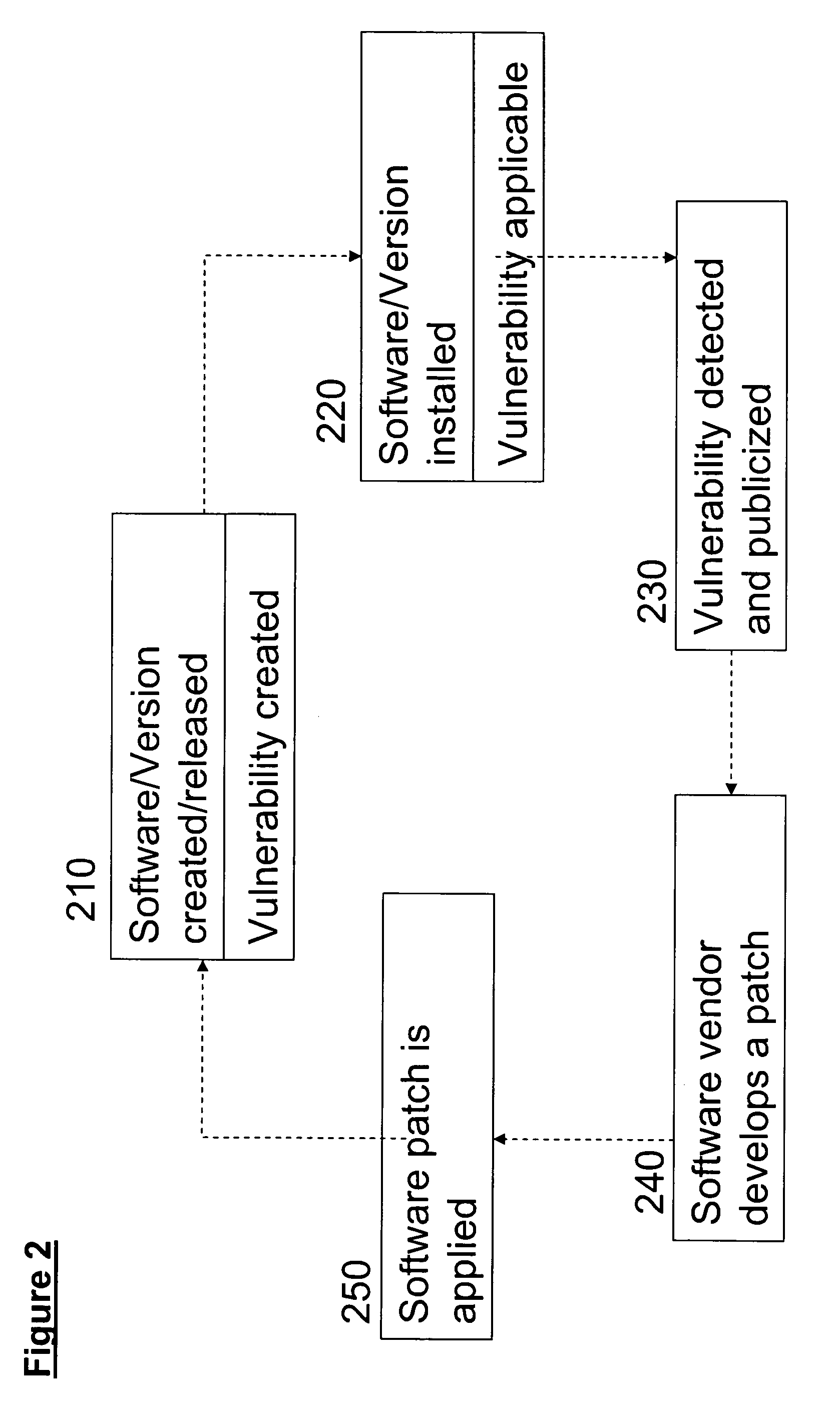Data transfer security
a data transfer and security technology, applied in the field of computer networks, can solve the problems of ineffective firewalls, software vulnerabilities, and direct exploits of malicious software resources,
- Summary
- Abstract
- Description
- Claims
- Application Information
AI Technical Summary
Benefits of technology
Problems solved by technology
Method used
Image
Examples
example implementation
[0110] Referring now made to FIG. 9, which illustrates an exemplary implementation of a system for protection against malware, according to a preferred embodiment of the present invention, in an enterprise computer network. The following paragraphs describe an exemplary networked environment of an enterprise. Then, the integration of a system and method according to a preferred embodiment of the present invention with the networked environment and its benefits is described.
[0111] The example enterprise network architecture comprises several network segments and a connection to external networks 910, including the Internet 915. The communication protocols used in the present embodiment are Ethernet and IP. Standard networking equipment, such as switches, hubs, and routers are used. Some of the network segments are designated for traffic that is completely internal to the enterprise. Other network segments are designated for both internal and external traffic.
[0112] Numerous end-poi...
PUM
 Login to View More
Login to View More Abstract
Description
Claims
Application Information
 Login to View More
Login to View More - R&D
- Intellectual Property
- Life Sciences
- Materials
- Tech Scout
- Unparalleled Data Quality
- Higher Quality Content
- 60% Fewer Hallucinations
Browse by: Latest US Patents, China's latest patents, Technical Efficacy Thesaurus, Application Domain, Technology Topic, Popular Technical Reports.
© 2025 PatSnap. All rights reserved.Legal|Privacy policy|Modern Slavery Act Transparency Statement|Sitemap|About US| Contact US: help@patsnap.com



